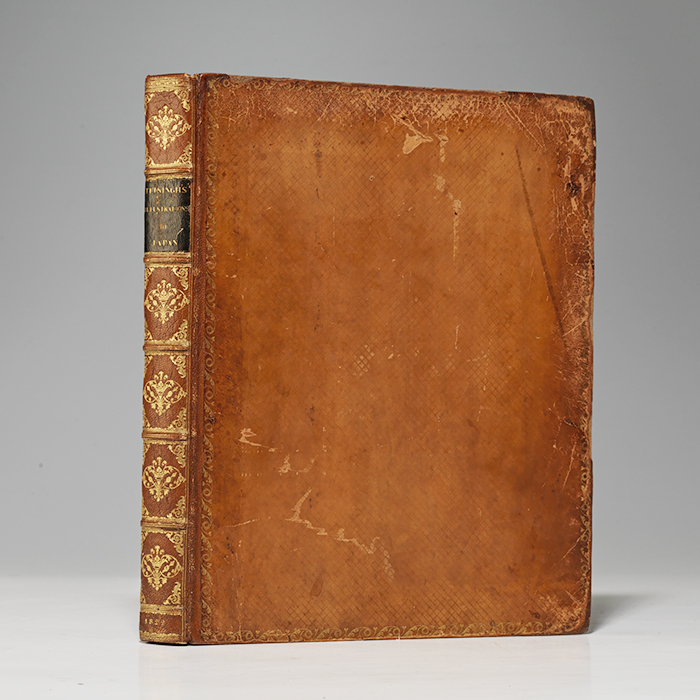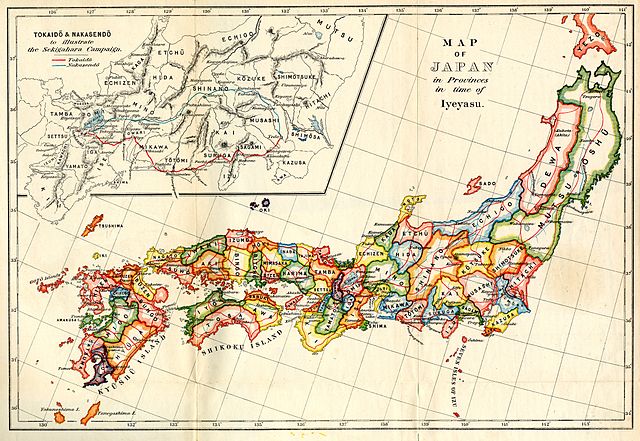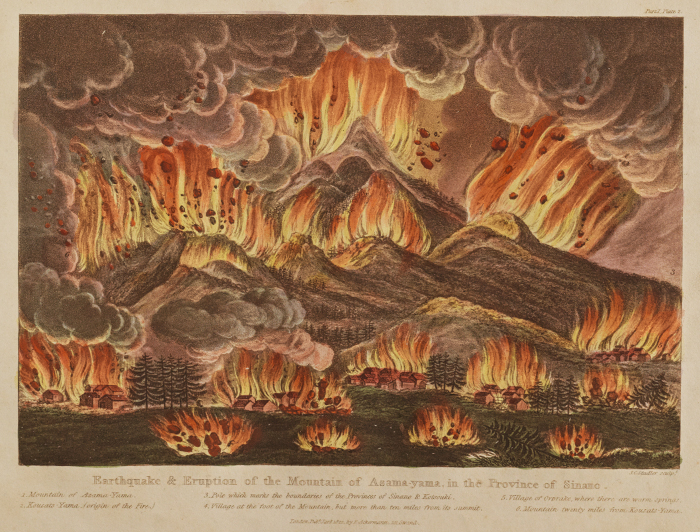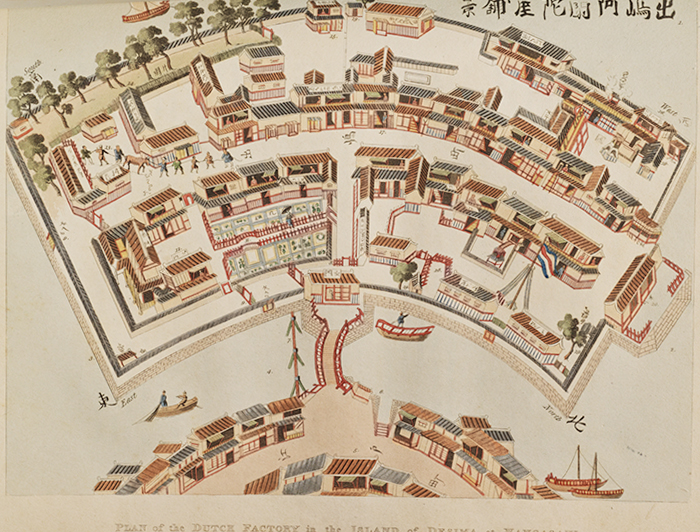Today, it’s hard to imagine an inaccessible land–a place entirely removed from trade, travel, illustration, photography, and film. In the early 1800s, it was easy to imagine such a place. Beyond the Silk Road lay Japan, a country most Westerners could not even begin to envision.

Isaac Titsingh’s Illustrations of Japan was the last major Western work in Japan prior to the opening of the country. For 214 years, the Japanese Tokugawa shogunate practiced an isolationist foreign policy known as sakoku. The period was characterized by extremely restricted trade and travel. For the most part, foreigners were banned from Japan and non-aristocratic Japanese people were forbidden from leaving. Numerous rationales have been proposed for the policy: preventing internal rivals from amassing wealth and allies; keeping the Spanish and Portuguese from placing claims on Japanese land; and even stopping the spread of Christianity. Military and merchant ships from all over the world attempted to break Japanese seclusion, but no one was successful until Commodore Perry in 1853. Perry forced his way into Japan. Japan, lacking a navy to defend it from American naval might, had no choice but to submit to trade. By the end of the 1800s, Japanese seclusion was over and the country was engaged with the world at large.

Written by Isaac Titsingh, an official at the Dutch East India Company, Illustrations of Japan draws on Titsingh’s experiences at Deshima between 1779 and 1784. Titsingh offers detailed and accurate accounts of the lives of the Tokugawa Shoguns, obviously written in collaboration with his Deshima interpreters. Titsingh also incorporates popular Japanese anecdotes to enliven historical facts, including harrowing descriptions of Japan’s frequent and catastrophic natural disasters.

Moreover, Titsingh pays considerable attention to cultural customs including religion, art, cuisine (the production of sake and soy sauce), celebration of life events, and even seppuku, a form of ritual suicide that has captured the Western imagination in the centuries since Titsingh’s wrote this book.

While he had a great deal of talent as a descriptive writer, Titsingh’s most important contribution was probably through his collection of Japanese books, objets d’art, and a few exceedingly rare color prints by premier Japanese artist Utamaro–likely the first Japanese prints to be brought into Europe. Until that point, Europeans would only have been able to see Japanese illustrations on wrapping paper for purchased goods from Japan–goods that would have been incredibly uncommon themselves due to trade restrictions under seclusion. The illustrations in this work are careful reproductions from Japanese originals, faithfully produced at the studio of acclaimed printmaker Rudolph Ackermann.

So, it isn’t very often that we have the opportunity to visit somewhere entirely new. Titsingh, through his fascinating text and beautiful plates, successfully transports us to seclusion-era Japan–a place once undiscovered by Westerners that disappeared at the moment of its discovery. Illustrations of Japan is a time capsule and that’s what makes it so special and so rare.

